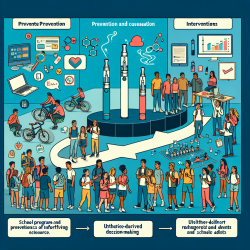Introduction
In the evolving field of speech language pathology, the integration of cutting-edge scientific research into clinical practice is paramount for achieving optimal outcomes for children. A recent study titled "Targeting Progranulin as an Immuno-Neurology Therapeutic Approach" offers groundbreaking insights that could revolutionize therapeutic strategies for neurodegenerative diseases, which could have profound implications for child therapy.
Understanding Progranulin's Role
Progranulin (PGRN) is a protein that plays a crucial role in regulating immune responses and maintaining homeostasis in the central nervous system (CNS). The research highlights that loss-of-function mutations in the progranulin gene (GRN) can lead to dysfunctional microglia, which are essential for brain surveillance and neuronal support. These mutations are linked to several neurodegenerative diseases, including frontotemporal dementia, Alzheimer's, and Parkinson's disease.
Implications for Child Therapy
For practitioners in speech language pathology, the insights from this research could be transformative. By understanding the mechanisms through which PGRN modulates microglial function, therapists can explore novel interventions that may enhance cognitive and communicative functions in children with neurodevelopmental disorders.
- Microglial Activation: Targeting PGRN could potentially convert aging and dysfunctional microglia into cells that actively fight disease, promoting synapse repair and optimizing neuronal function.
- Neuroprotection: By elevating PGRN levels, it may be possible to protect neurons from degeneration, thereby preserving cognitive functions that are critical for speech and language development.
- Therapeutic Strategies: Incorporating strategies that modulate immune responses could complement existing therapeutic approaches, offering a holistic framework for addressing complex neurodevelopmental challenges.
Encouraging Further Research
While the current findings are promising, further research is essential to fully understand the therapeutic potential of PGRN in child therapy. Practitioners are encouraged to stay informed about ongoing clinical trials and emerging data that could inform practice and improve outcomes for children.
To delve deeper into the original research and explore the detailed mechanisms of PGRN, practitioners can access the full paper: Targeting Progranulin as an Immuno-Neurology Therapeutic Approach.
Conclusion
As the field of immuno-neurology continues to expand, the potential to harness the brain's immune system to combat neurodegenerative processes offers exciting possibilities for speech language pathology. By integrating these insights into practice, therapists can contribute to innovative solutions that enhance the quality of life for children facing neurodevelopmental challenges.










